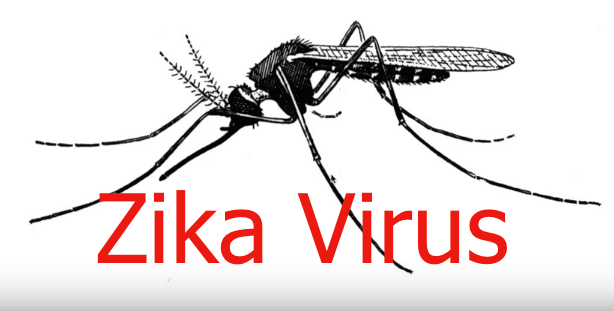The Zika virus is a mysterious illness with devastating effects. First discovered in Uganda’s Zika forest, the virus was long thought to be relatively benign — especially when compared to malaria. Since Zika’s invasion into Brazil last year, the virus has ripped through Latin America — possibly infecting millions. So far there are over 1,000
The Zika virus is a mysterious illness with devastating effects.
First discovered in Uganda’s Zika forest, the virus was long thought to be relatively benign — especially when compared to malaria.
Since Zika’s invasion into Brazil last year, the virus has ripped through Latin America — possibly infecting millions.
So far there are over 1,000 confirmed cases of microcephaly or birth defects. Also Zika may be linked to autoimmune malfunctions like Guillian-Barre Syndrome. And the Zika virus can be transmitted through sex — an unprecedented first for a mosquito virus. My colleagues think Zika has mutated, hence the neurological disaster it’s inflicting.
The concern is that 40 million Americans travel to Zika-affected countries each year including perhaps 500,000 pregnant women.
Four hundred Americans have so far contracted Zika virus. Zika is predicted to spread locally within the U.S. mainland this summer. Puerto Rico already has 700 cases, including 89 pregnant women, and one person has died from the disease.
Are there drugs to ward off Zika? No.
What’s the best way to protect against Zika? Avoid unprotected sex with strangers. Cover up. I do not use DEET. Instead I rely upon a special home blend of citronella, basil, Eucalyptus and rosemary essential oils mixed with plant carrier oil like almond or avocado.
This 2006 photo provided by the Centers for Disease Control and Prevention shows a female Aedes aegypti mosquito in the process of acquiring a blood meal from a human host. Photo credit: AP
My genetics colleagues are trying to either turn all the Egyptian mosquitoes – carriers of Zika – into males or to splice genes into mosquitoes making them incapable of carrying malaria, West Nile virus, Dengue Fever or the Zika virus.
Biocides, in my opinion, are not an option because today’s chemistry is too potent and already two billion pounds each year of neonicotinoids are killing bees, soils and water and harming all life forms.
Earlier this week, my spiritual mentor asked me: “Why do we need mosquitoes?”
Mosquitoes in some ways belong on the decomposition or base of the triangle of life. Producers like plants make up one of the upright sides of the triangle and consumers like humans are on the other upright side while decomposers like bacteria, fungi, virus, microbes, soil fauna, flies and other insects comprise the base of the triangle of life.
Mosquitoes are formidable vectors of disease they keep populations of their prey in-check. In fact, mosquitoes kill approximately one million people a year.
The mid April 2016 catastrophic Texas flooding killed seven people, flooded 1,000 homes and caused more than $5 billion in damage. The Houston-area community of Hockley was deluged by 17 inches of rainfall in less than 24 hours. That’s more perciptation than Salt Lake City, Utah gets in a year. Photo credit: cbs.com
As Earth warms from burning subsidized, climate-altering fossil fuels, disease-carrying mosquitoes are spreading.
A coal-fired power plant in England — the country where the industrial revolution began. Photo credit: National Geographic Jason Hawkes
It’s a harsh reminder that what we do to the atmosphere by burning heat-trapping fossil fuels, we do to ourselves.
As fires (red dots) from nearby Indonesia intensified on September 29, 2015, Singapore’s air quality approached hazardous levels, sinking the city into a thick grey haze. The pollution — reached its worst level ever recorded — prompted officials to close all primary and secondary schools and distribute anti-pollution masks to the city’s most vulnerable. The fires were deliberately set to clear ancient forests — the most perfect carbon dioxide warehouses to have ever evolved — to make room for monoculture palm oil plantations. The destruction of nature in the name of more palm oil plantation is rampant and corrupt Indonesian government officials regularly turn a blind eye to it. Photo credit: NASA/ Jeff Schmaltz, MODIS Rapid Response Team.
Have humans reached carrying capacity on Earth? This much we do know: we are consuming at least 1.6 times more than our planet can give us.
The oceans are filled with an estimated 51 trillion pieces of plastic and it mostly originates from the land. #SaturdayPlasticPatrol Photo credit: Naio Halter
Is the Zika virus a red flag for consuming less, reusing materials and refusing plastics? I think so.
Support the crucial conservation work of Sea Shepherd because their protecting our friends the whales. Photo credit: Farrah Smith/MV Farely Mowat
It is time to #SaveNatureNow
Earth Doctor Reese Halter is the author of Wild Weather: The Truth Behind Global Warming.
Source: Ellabird books









































Leave a Comment
You must be logged in to post a comment.